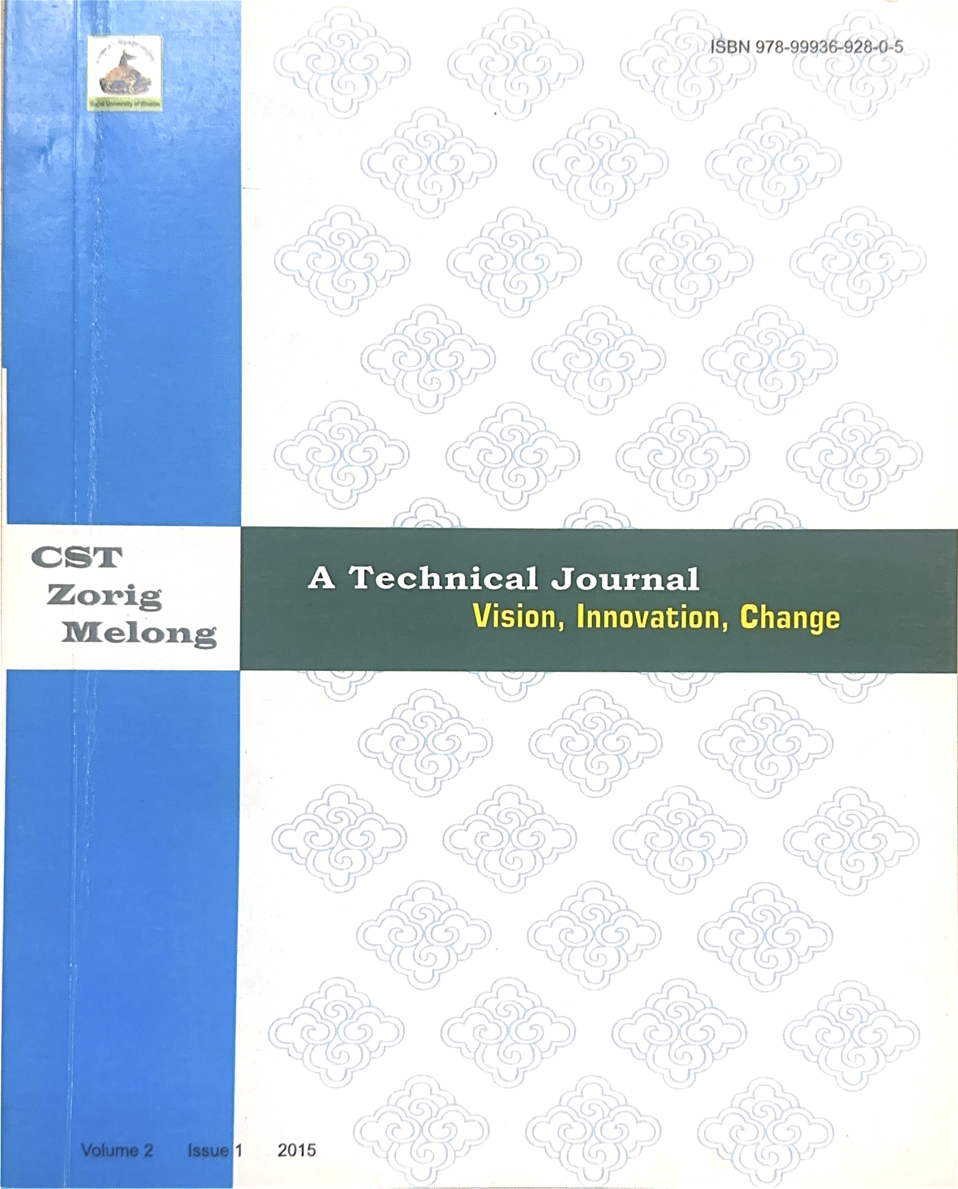Geotechnical Investigation and Rehabilitation on Road Distresses in Phuentsholing Thromde
DOI:
https://doi.org/10.17102/zmv2.i1.004Keywords:
Geotechnical Investigation, Pavement, Functional Defect, Structural Defect, Distresses, Dynamic Cone Penetration (DCP) Test, Moisture Content, Atterberg's Limits, Compaction, Specific Gravity, Sieve Analysis, California Bearing Ratio (CBR), Bitumen Content, AC GradingAbstract
The project on Geotechnical Investigation and Rehabilitation on Road Distresses in Phuentsholing city embraces the study on structure of the existing pavement and geotechnical properties of subgrade that relates the behavior of the pavement structure. It focuses on the principal factors resulting in pavement deterioration which are either led by deficiency of the pavement materials or due to subgrade behavior. Thus, the information collected accompanied by test results is used to assist in reporting of geotechnical investigation with suitable engineering rehabilitation measures. The study area is divided into five sections and the pavement deteriorations at each corresponding section are outlined in a layout map generated by total station survey. The pavement distresses based on attributes are studied and graphically represented. Based on the extent of deterioration, the location for sampling is chosen for both pavement and subgrade study. The adoption of suitable methods to conclude appropriate rehabilitation measures involves collection of traffic volume data, tests and analysis on geotechnical properties such as Dynamic Cone Penetration (DCP) test, Moisture Content, Atterberg’s Limits, Compaction, Specific Gravity, Sieve Analysis, and California Bearing Ratio (CBR). The tests on pavement structure include Bitumen Content and AC Grading. The study areas have predominant modes of distresses which were identified as crackings, potholes, and surface texture deficiencies. The dominating distresses include longitudinal crackings, potholes, alligator crackings, along with minor distresses such as raveling and rutting. Subgrade of Road Section 1, Section 3, and Section 4 were found to have plasticity index values greater than 3 [(0–3) – Nonplastic, (3–15) – Slightly Plastic, (15–30) – Medium Plastic, >30 – Highly Plastic]. The plasticity of the subgrade at these sections was a contributing factor for pavement deteriorations mainly caused by improper drainage systems. Other sections were deteriorated due to improper composition in the pavement materials. The proposed rehabilitation measures include total reconstruction for the low CBR rated sections with surface and subsurface drainage to control water table fluctuations. Subgrade stabilization in high plastic soils using capillary cutoff mechanisms is also recommended. Common rehabilitation measures required are cold plane and overlay for sections having deficiency in pavement materials.





